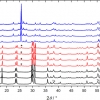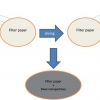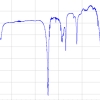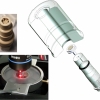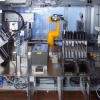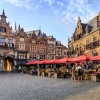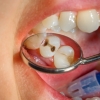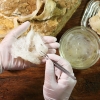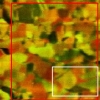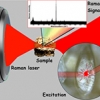Articles
Structural, dielectric and Raman spectroscopic study of complex electric and magnetic interactions in multiferroic ionic crystals
Holger Gibhardt, Fabian Ziegler and Götz Eckold tell us about the use of Raman spectroscopy to understand complex electric and magnetic interactions in multiferroic ionic crystals. Multiferroics are a relatively new class of materials that exhibit magnetic and electrical ordering simultaneously. Both phenomena are coupled so that electric forces may be used to control the magnetic structure and vice versa. Raman enables understanding of the underlying processes on the atomic level, essential for the development of new materials with these properties.
Surface-enhanced Raman spectroscopy for selected energetic material detection
Surface-enhanced Raman spectroscopy for selected energetic material detection is the topic of Mohamed Mokhtar, Tamer Wafy and Mahmoud Abdelhafiz. They have investigated various approaches to improve the SERS response of explosive materials and have come up with a simpler, one-step method for the detection of natural, solid TNT.
SensorFINT, the new European Network for assuring food integrity using non-destructive spectral sensors
The SensorFINT COST Action is a European Network for assuring food integrity using non-destructive spectral sensors.
FAIR practice
Following our articles on the FAIR initiative, we now look at some examples of the FAIRification of data handling, collection and archiving.
FAIR enough?
The Tony Davies Column offers a challenge to us all with another contribution on FAIR data, which should be Findable, Available, Interoperable and Readable. It is clearly the way we should all be going, everybody from manufacturers and software developers, through researchers to publishers needs to work together.
analytica virtual 2020: a new platform in times of contact and travel restrictions
How did a major trade show organiser cope with the disruption of COVID-19? Susanne Grödl, Exhibition Director of analytica for Messe München, gives her experience.
Advances in the application of Raman spectroscopy in the nuclear field
A look at recent advances in the use of Raman spectroscopy in the nuclear industry.
Bill George
Peter McIntyre and Tony Davies remember Bill George, a real Welsh character and educator whose style and charisma influenced many to go on and not only stay in science but to rise to leading positions either in industry or academia.
Weights or measures for better calibration
In quantitative analysis, is it better to weigh materials when making up standard solutions or to use volumetric techniques? Traditionally, the answer has been “volume”, however, things may not be as straightforward as they seem. Henk-Jan and colleagues have conducted a new experiment, using robots for both sample preparation and spectroscopic analysis which may provide a definitive answer. Unfortunately, the answer must wait for publication of their paper, but Tony and Henk-Jan’s history of this question makes interesting reading nevertheless.
COVID-19: Lock-down and up-skill
With a significant proportion of our regular readership probably under home lock-down, we were wondering if we could help you at this difficult time by pointing out some useful online resources. So, when we finally come out of this pandemic, you could do so better skilled and more up-to-date than when we went in to it.
Planning for EuroAnalysis 2021
Tony and Lutgarde Buydens give us an update on the planning for the major EuroAnalysis 2021 conference, which is being held in Nijmegen, the Netherlands, at the end of August 2021. At this stage, they are keen to gather suggestions from readers on topics they would like to see covered. Groups are also invited to consider hosting their own event under the EuroAnalysis 2021 banner.
Old burned bones tell us about past cultures
Burned bones are often found in archaeological sites as a result of fire or funerary practices and are often the only preserved human remains. Using inelastic neutron scattering, infrared and micro-Raman spectroscopies, the authors can reach definitive conclusions as to the temperature at which the bone was burned. This enables archaeologists and anthropologists to learn more about how ancient civilisations used fire for funerary, burial or cooking purposes.
A week in the life of a PhD student
An interesting insight into, well, a week in the life of the author as a fourth-year PhD student. Katie is working on investigating a way of detecting liver damage using spectroscopy, which is “about as interdisciplinary as you can get”! I’m sure all readers will find it interesting and it may be helpful for those you know who may be considering a PhD.
Raman spectroscopy in the characterisation of carious dental tissues
In this work we demonstrate the suitability of confocal Raman microscopy for the characterisation of carious dental tissues. Samples of enamel and dentine, presenting carious lesions in different stages of progression, were evaluated by comparing the depolarisation ratio of the PO43– symmetric stretching band at 959 cm–1 in the different tissues. Both line and area scans were performed to gauge these variations. Moreover, the obtained results were compared with the tissues’ behaviour when interacting with ultraviolet radiation, namely the induced fluorescence in some tissues. The depolarisation ratio has proven to be a valuable tool in recognition of demineralisation of both enamel and dentine due to caries. The analyses of the collagen bands in the dentine sample turned out to be more difficult to evaluate due to high fluorescence in the carious region.
Multimodal imaging of cells and tissues: all photons are welcome
Different spectroscopic techniques have been combined to provide additional and complementary information for decades. Increasingly, this is being expanded beyond just two techniques and may include spatial/imaging information as well. All of which bring their own challenges. In “Multimodal imaging of cells and tissues: all photons are welcome”, David Perez-Guaita, Kamila Kochana Anja Rüther, Phillip Heraud, Guillermo Quintas and Bayden Wood report an example of these new approaches. They look at the use of infrared, Raman and X-ray fluorescence spectroscopies to obtain combined imaging data of whole algal cells and discuss how to overcome the challenges.
Raman microspectroscopy is a rapid technique to authenticate edible bird’s nest—a glycoprotein
Edible bird’s nest (EBN) is a highly valued food, especially in China. Due to this, there is the potential to bulk out the EBN with artificial additives to receive a higher price. This article shows yet another way in which spectroscopy is used to detect adulteration of food and prevent fraud in a quick and cost-effective manner.
Raman microspectroscopy provides access to compositional and microstructural details of polycrystalline materials
There are a number of advantages of Raman microspectroscopy, including its the ease of its application, as in many cases no or very little sample preparation is needed and the experiments are performed at atmospheric pressure.
Shedding light on medieval manuscripts
It is not every issue that one of our articles starts with a quotation in medieval English, and it is appropriate as two of our articles cover the use of spectroscopy in cultural heritage. This is yet another field where the rich information provided by spectroscopy, along with its non-destructive nature (for many techniques), portability and ability to generate chemical images make it the answer to many questions. Kate Nicholson, Andrew Beeby and Richard Gameson are responsible for the medieval English at the start of their article “Shedding light on medieval manuscripts”. They describe the general use of Raman spectroscopy for the analysis of historical artefacts, and, in particular, their work on medieval European manuscripts and 18th century watercolour pigments. They stess the importance of checking the actual laser power density to avoid damage to priceless artefacts.
Spectroscopic evidences to understand the influence of marine environments on Built Heritage
This article looks at the use of Raman and XRF spectroscopies to investigate the different deterioration processes caused by marine aerosols. These techniques can detect the decay compounds and the original composition of the different materials from historical buildings close to the sea, which can then be used to explain the reactions that take place on them. This helps in the development of remedial actions and preventive conservation strategies for historical buildings.
The analytical niche for Raman spectroscopy in biological pigment research
As you will have noticed from this issue’s cover, we are making a colourful start to 2016. In the first article on “The analytical niche for Raman spectroscopy in biological pigment research”, Daniel Thomas and Cushla McGoverin suggest that Raman spectroscopy may have a particularly valuable role in pigment biology research. Pigments are almost universal in biology and are the basis of much of what we find attractive in flowers, birds and sea life, such as the fan corals on the cover. The authors show how Raman spectroscopy can be used to quickly confirm the presence of a pigment as well as providing more detailed knowledge about unknown pigments.

